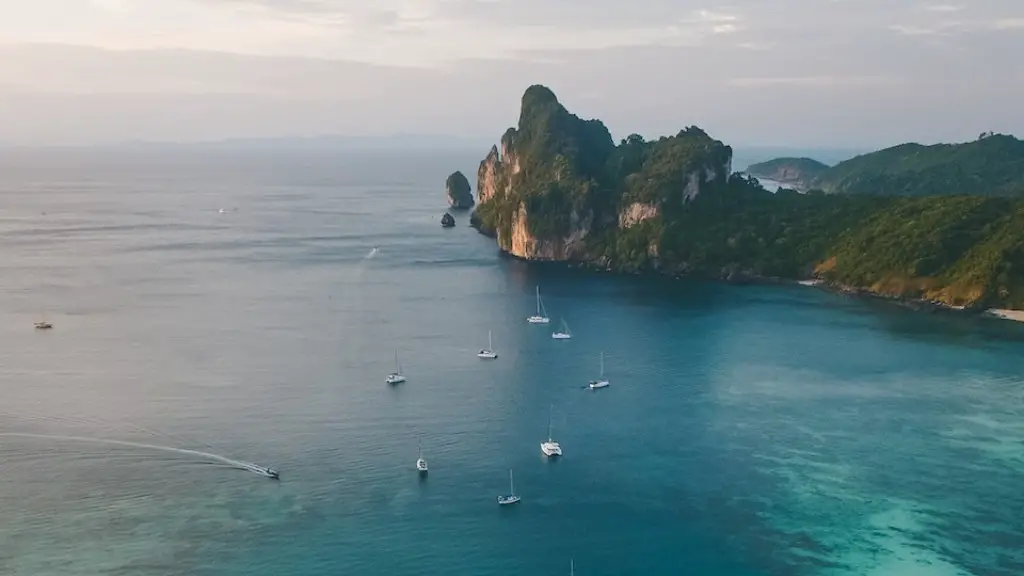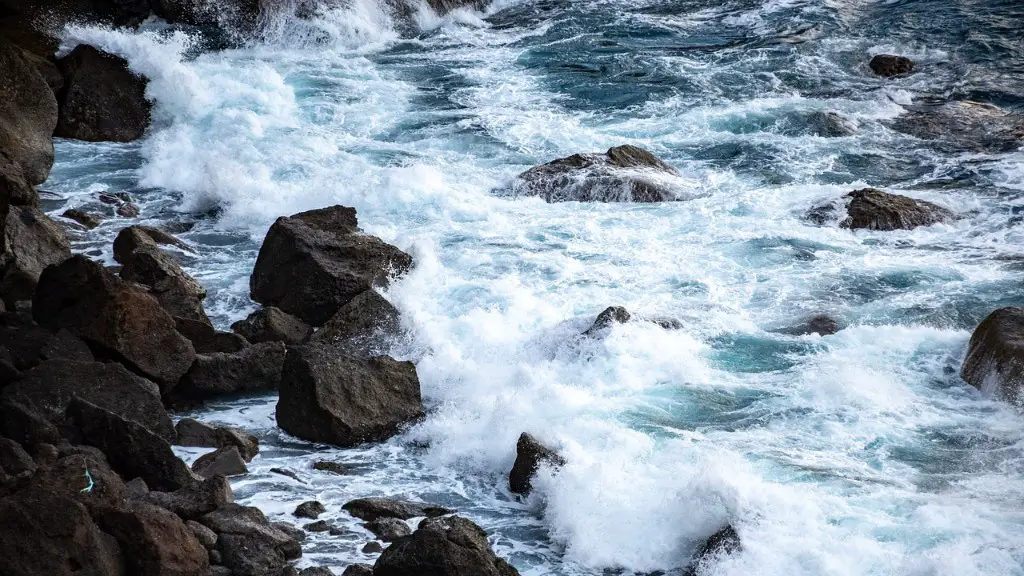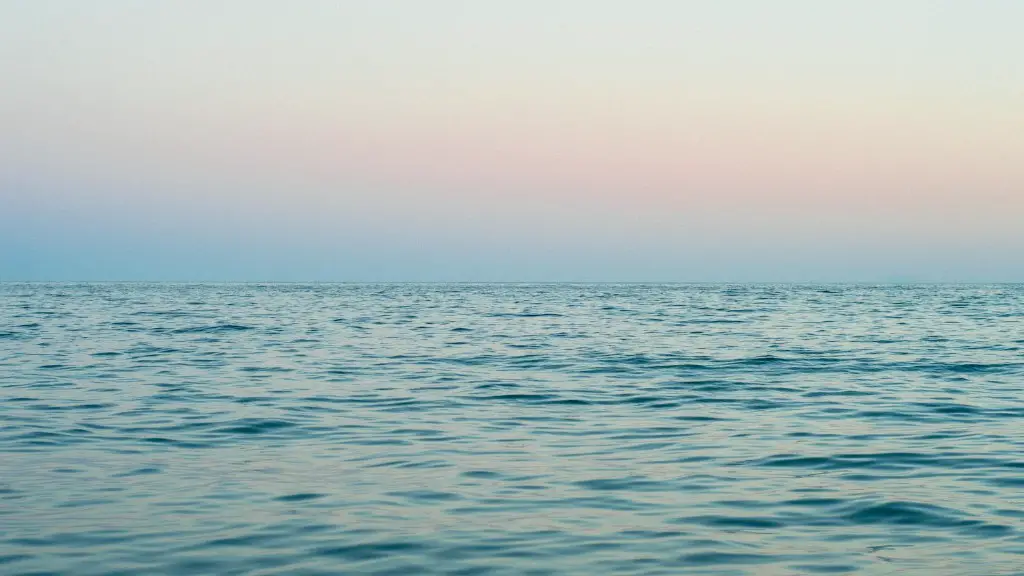The Caribbean Sea
The Caribbean Sea is an important body of water occupying the Caribbean Basin in the western Atlantic Ocean. Bordered by Mexico, Central America, the Dutch Antilles and, the Greater and Lesser Antilles, it stretches all the way from the Gulf of Mexico in the west to the Venezuelan coast in the east. The Caribbean Sea covers an area of more than 2,500,000 square miles, making it one of the largest bodies of water in the world.
The Caribbean Sea has a profound impact on the environment and human lives in the region. The combination of warm, shallow water and numerous tropical storms make it a popular destination for both tourists and scientists, who come to study its diverse wildlife and unparalleled landscapes. The coral reefs of the Caribbean form a unique ecosystem and support the lives of many species of fish and coral. In addition, some areas of the Caribbean Sea are home to extensive offshore oil fields and associated pipelines.
The Caribbean Sea is also pivotal in international trade and commerce. Major shipping routes connect the ports of South America, Central America and the Caribbean to the rest of the world, which has created a thriving maritime economy in the region. The Caribbean has seen a steady increase in the number and size of cruise ships and private yachts, as well as an increase in the number of commercial fishing vessels.
The Caribbean Sea is part of the Atlantic Ocean. It is bordered by 14 coastal countries, the United States and a number of dependent territories. The Caribbean’s waters are connected to the Atlantic by two different ocean currents, the Caribbean Current and the Antilles Current. The Caribbean’s primary outlet is the Yucatan Strait which separates Mexico and Cuba, and provides access to the Gulf of Mexico and the rest of the Atlantic Ocean.
The Caribbean Sea is home to a wide variety of marine life, including numerous species of fish, turtles, sharks and rays. Its coral reefs provide a vital home for countless species of fish and coral, and are considered one of the most biodiverse reef ecosystems in the world. The Caribbean’s coral reefs have experienced significant destruction due to rising sea temperatures, coral bleaching and disease epidemics, as a result of global warming.
In addition to its unique ecology, the Caribbean Sea is also renowned for its beautiful scenery. The region is known for its clear waters, white sandy beaches and turquoise lagoons, which make it a popular destination for beach-goers and nature-lovers alike. The region is also a hotspot for marine life research and conservation, as numerous countries in the region are actively involved in preserving and protecting the ocean’s ecosystems from exploitation and destruction.
The Caribbean’s Large Tourist Base
The Caribbean Sea is home to some of the world’s most beautiful and exclusive luxury resort destinations, many of which are located on its numerous islands. From the seductive French Riviera of Martinique to the laid back lifestyle of the Bahamas, the Caribbean provides an array of options to suit all tastes. Tourism accounts for more than 10% of the region’s gross domestic product and is a major economic contributor to many Caribbean nations. The Caribbean’s tropical climate, turquoise waters, pink sand beaches and relaxed atmosphere are some of its biggest selling points, which make it a favorite among tourists from around the world.
Despite its popularity, however, the Caribbean Sea is not immune to the numerous environmental threats caused by global warming and unmanaged coastal development. Climate change has led to an increase in the frequency and intensity of hurricanes and tropical storms, which have wreaked havoc on small island states in the region. Additionally, rising sea levels and coastal erosion have put a strain on the region’s rich biodiversity and caused significant damage to fragile coral reefs.
The Impact of Climate Change on the Caribbean Sea
The effects of climate change are already having a major impact on the Caribbean Sea. Rising sea levels, dramatic changes in ocean temperatures, and an increased frequency and intensity of tropical storms and hurricanes, have already had a significant impact on the region’s fragile coral reefs and marine life. As a result, the Caribbean’s tourism industry has taken a hit, as many of the region’s most popular destinations are now subject to more frequent and destructive storms.
As a highly vulnerable area, the Caribbean Sea is in need of urgent, comprehensive climate change adaptation strategies. In order to protect its coral reefs, reefs, beaches and other coastal ecosystems, the countries of the Caribbean must take action to mitigate the negative impacts of global warming and climate change, and work towards sustainable development.
The effort to protect the Caribbean Sea from the effects of climate change must be led by the governments of the region. Many countries in the region have become signatories of the Paris Agreement, which aims to reduce global emissions and limit the impact of climate change. In order to be successful, however, additional measures must be taken to promote sustainable development and coastal management in the region.
Conservation Efforts
The fight to protect the Caribbean Sea is being waged on multiple fronts. Governments throughout the region are committed to preserving their coastlines, and have implemented a variety of policies and initiatives to limit the damage done by coastal construction, unsustainable fisheries and other environmental threats. Environmental organizations and foundations are also making significant contributions to conservation efforts, providing resources, expertise and support to a range of projects aimed at protecting the region’s biodiversity and mitigating the effects of climate change.
The international community is also stepping up to the challenge of protecting the Caribbean Sea. The United Nations has designated several areas in the region as protected zones, such as the Sargasso Sea, and international bodies such as the International Union for Conservation of Nature have made significant investments in marine conservation initiatives. Additionally, the European Union and the United States have both provided financial and technical support for a variety of Caribbean conservation initiatives.
The Caribbean Sea is a critical part of the global ocean system, providing essential goods and services to the countries of the region. In order to protect this precious ecosystem from further damage, it is essential that the nations of the Caribbean Sea, as well as the international community, take decisive action to curtail the effects of climate change and ensure sustainable development in the region.
Conclusion
The Caribbean Sea is a vital body of water in the Atlantic Ocean. Its ecosystems provide a home to a wide variety of marine life, and its crystal-clear waters and white-sand beaches make it a popular destination for tourists. However, the Caribbean is increasingly threatened by the effects of climate change, and the governments of the region must take decisive action to ensure its continued health and protection. Additionally, the international community must work together to provide financial and technical support for Caribbean conservation efforts. Only with a coordinated effort from all stakeholders can the Caribbean Sea remain a viable and vibrant ecosystem for generations to come.



